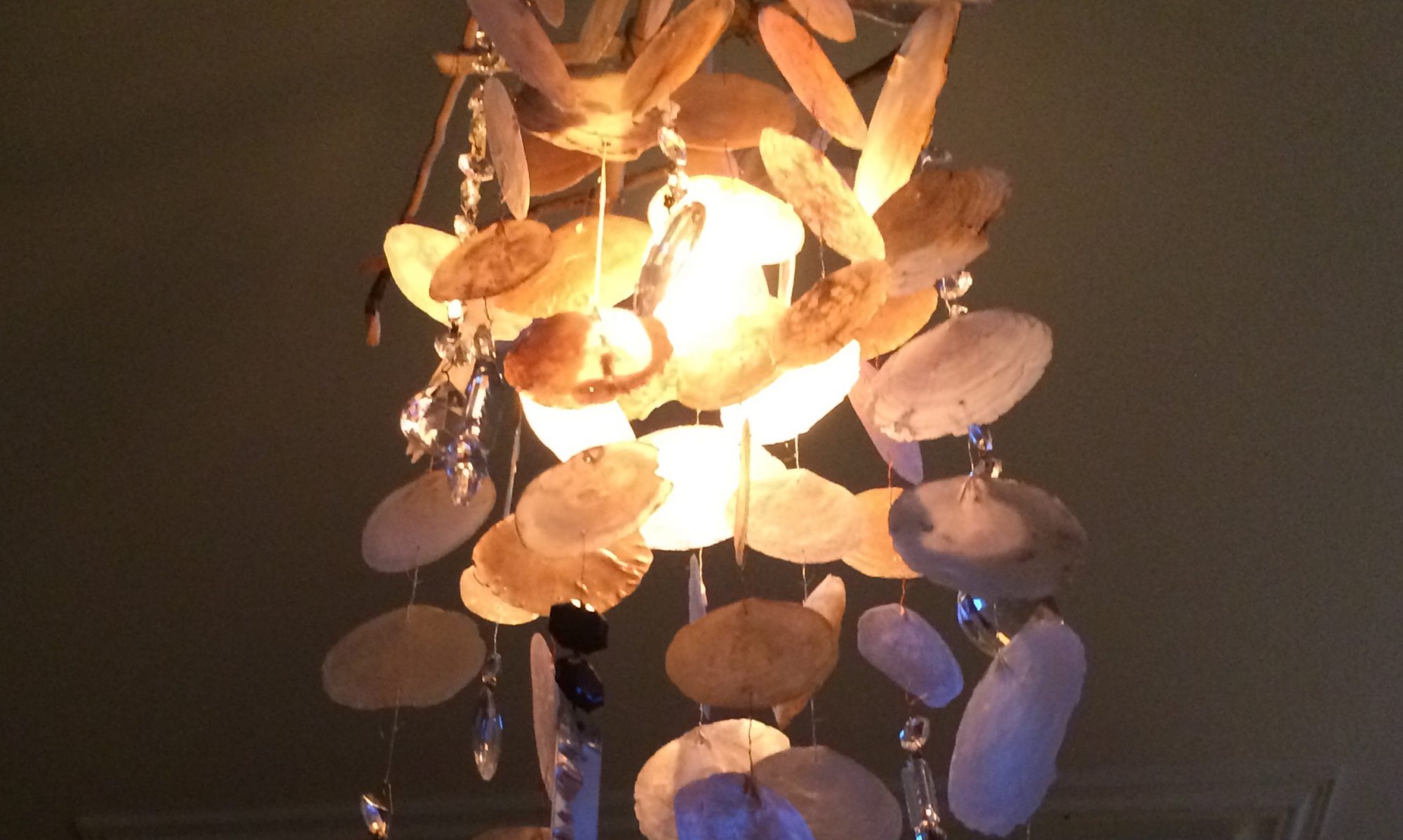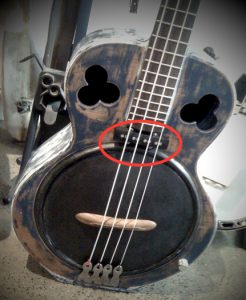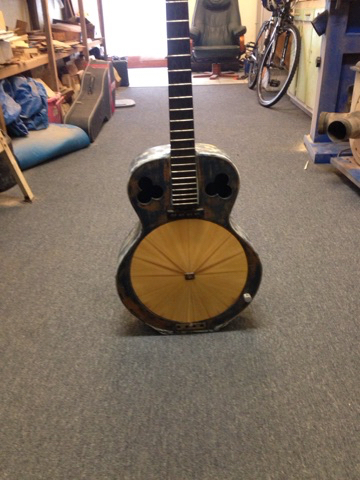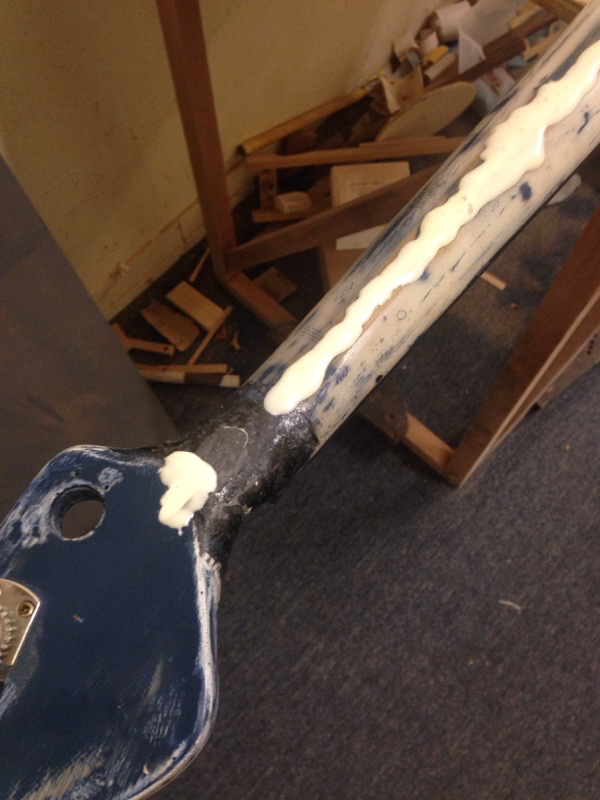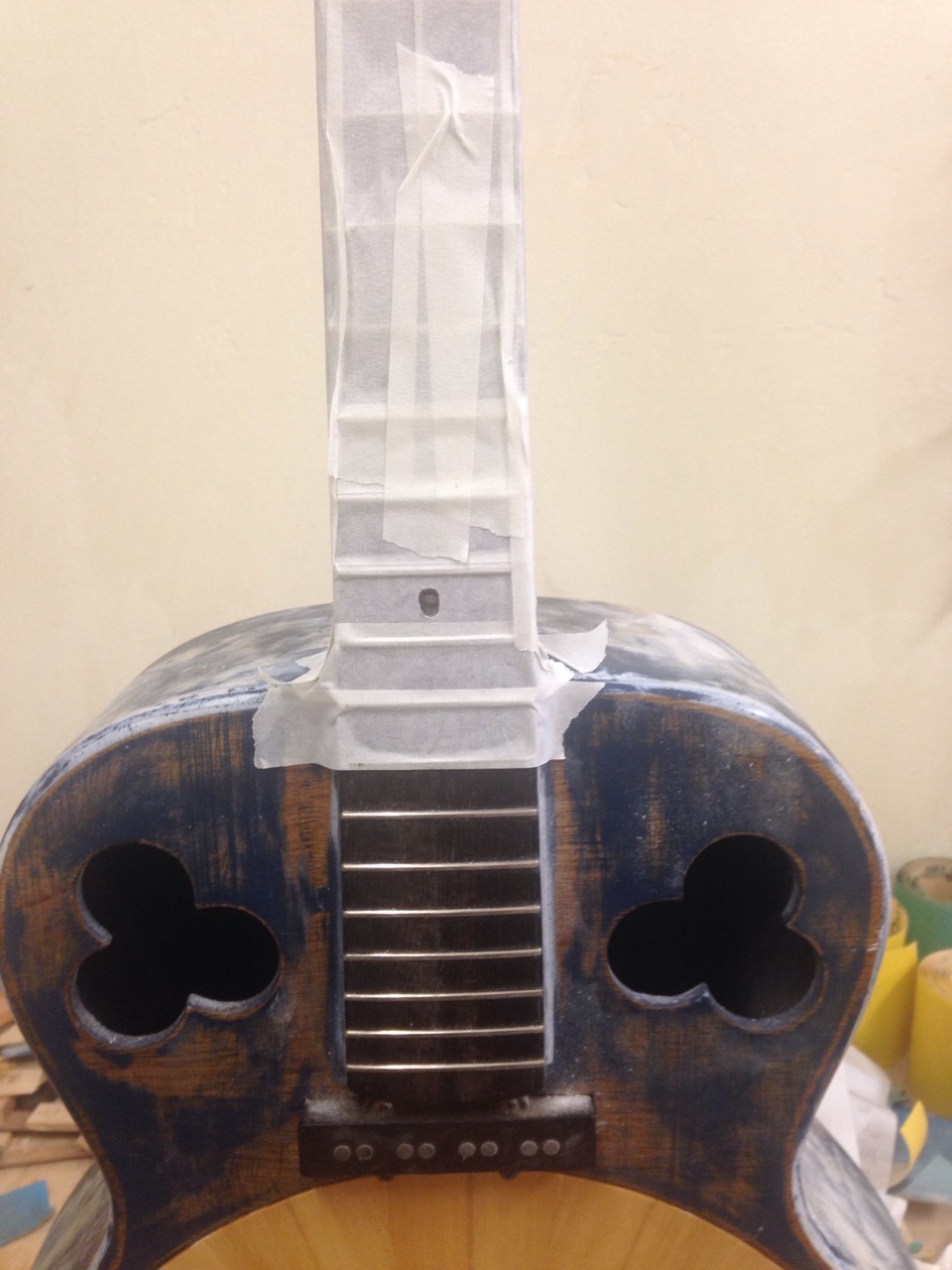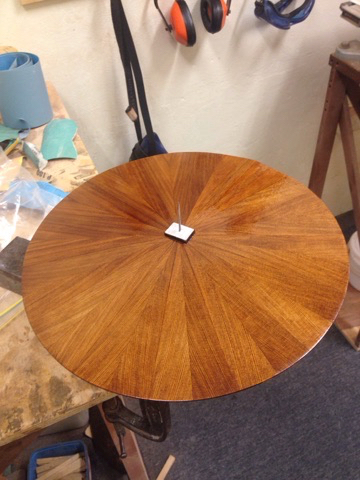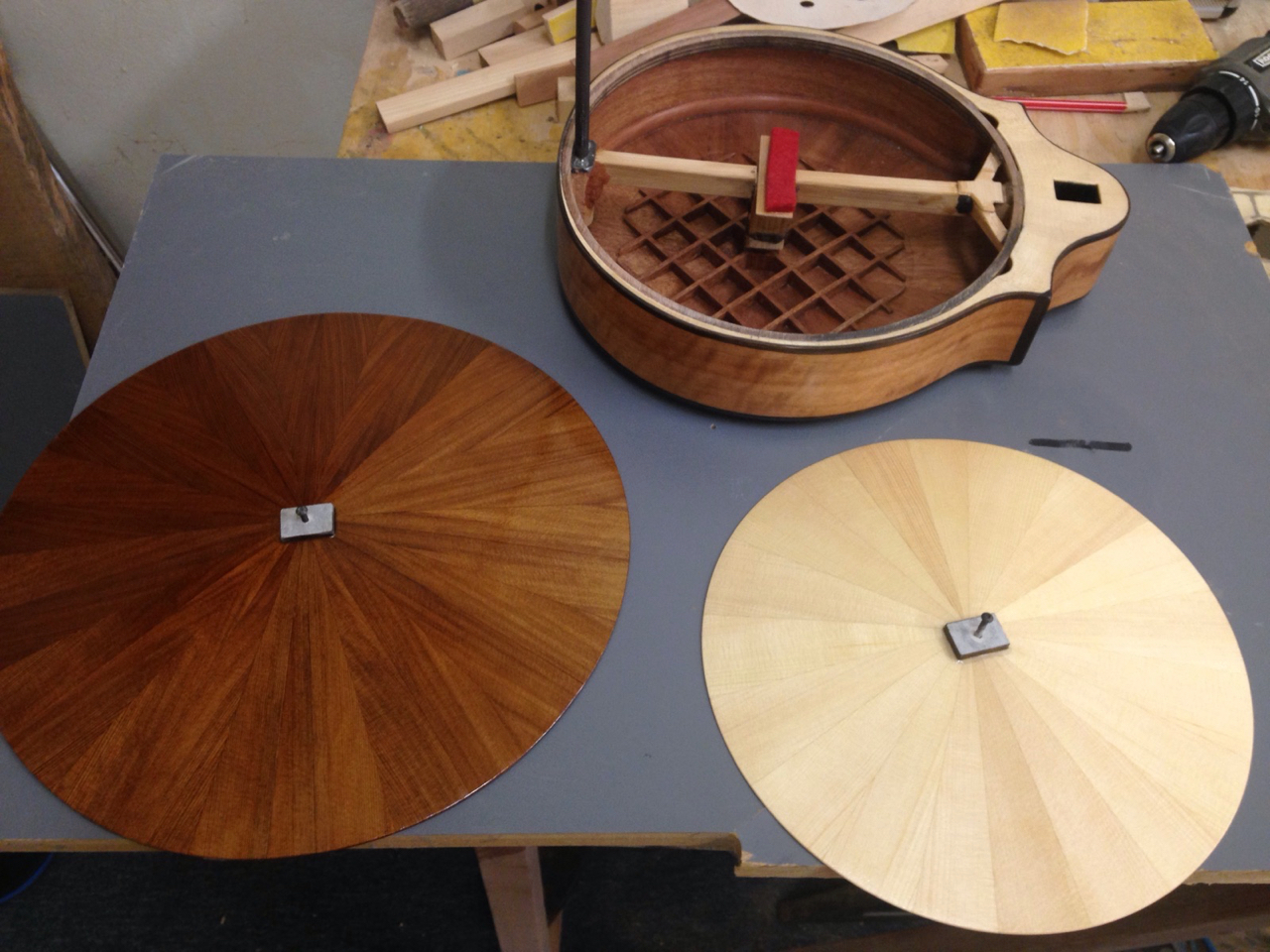A long time ago, I went to the Melbourne Guitar Makers Festival (go on, support your local luthier).
And I fell in love with this strange, one-off acoustic bass guitar.
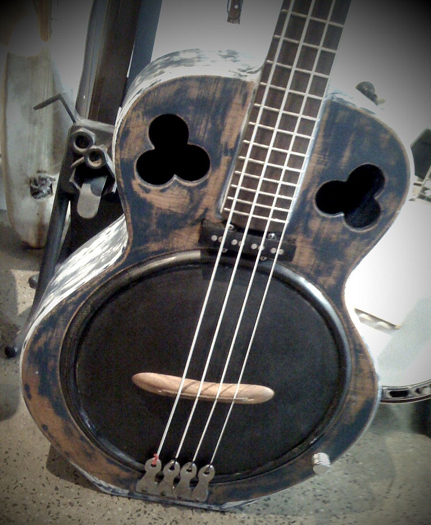 I’m not using the word “unique” like we do all the time now. Like “key”, or “passion”, or “vision”.
I’m not using the word “unique” like we do all the time now. Like “key”, or “passion”, or “vision”.
This instrument is actually a one-off. Nothing like it, anywhere in the world. It was the only one of its kind, made by some guy I had never heard of called Richard Morgan. There is good read with more detail on its unique qualities here. But for me, there were many which stood out.
Firstly, most acoustic bass guitars are a scam. The idea is attractive, but just wrong. They generally sound terrible.
The physics is not in the luthiers’ favour: to function, the bass has to resonate as low as 40 times a second (that’s slow) to create the lowest notes on the instrument, which are the most important. Mostly, acoustic bass guitars are just not big enough to do that well. So what you hear is a clanking sound (the strings clack-clacking on the frets, and not much actual fundamental.
This bass was loud. It wasn’t a thumpy sound, but it had the promise of being heard in one of my favourite settings to play music: just sitting around with friend somewhere, pickin and grinnin’, where the double bass is not practical.
Secondly, it was mostly made of carbon fibre, and what looked like fibre glass. So, that’s unusual. It felt super-solid.
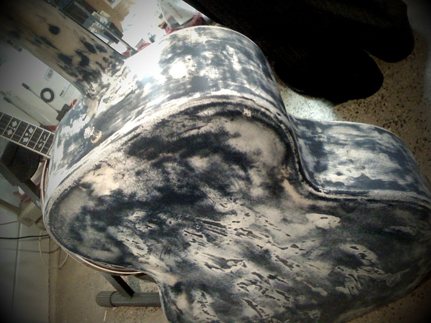
By the way, it still has three wooden components: a wooden bridge, a real ebony fingerboard (pre CITES-ban ebony from beside an airstrip in the Solomon Islands) —
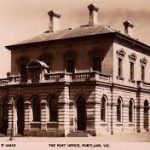
and that wooden top is from the counter of the old Portland Post Office.
Thirdly, it had a jazz bass pickup, not a piezo. Basically, this meant it could be played at full-volume, through an amplifier, in a full-band setting, and it would sound like a proper electric bass (not a louder, but not-very-good acoustic bass).
 Do you see? Just below that mouthwateringly agricultural tailpiece, the ass of this bass is flat. It stands up by itself. No guitar stand. Why don’t they all have this?
Do you see? Just below that mouthwateringly agricultural tailpiece, the ass of this bass is flat. It stands up by itself. No guitar stand. Why don’t they all have this?
But the most unique element of this bass’s story is that is made with a resonator design. It’s not common. The sound is actually produced by a resonating cone of spun aluminium. You’re probably familiar with that design being used on guitars like this:
 But — nobody builds basses like that. And this one has a cone of carbon fibre.
But — nobody builds basses like that. And this one has a cone of carbon fibre.
So, I’m in love. That’s obvious to you, right? So I did what most of us do when we feel the pull of love, and we are old enough to know the cost. Nothing. I sighed, and gave her back.
A year or so later, I saw it was for sale, on the wall at Guitar Gallery. It stayed there a long time. It seemed like a lot of people just couldnt get past her uniqueness. A lot of people just didnt find the bass visually attractive. I thought they must be crazy.
So each time I found an excuse to pop in to Guitar Gallery it was still on the wall. And, like the very good friend that he is, Peter Bodin (Peter & the Wolves) kept telling me I needed to stop. Stop popping in, getting it down off the wall, trying it, sighing, talking about it, and not buying it. So one morning I bought it, and brought it home.
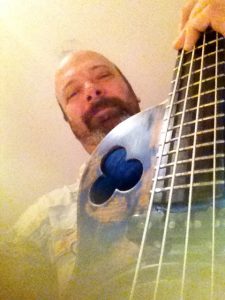 Now, she’s on my wall, instead of Gerry’s , and we’ve been in love ever since.
Now, she’s on my wall, instead of Gerry’s , and we’ve been in love ever since.
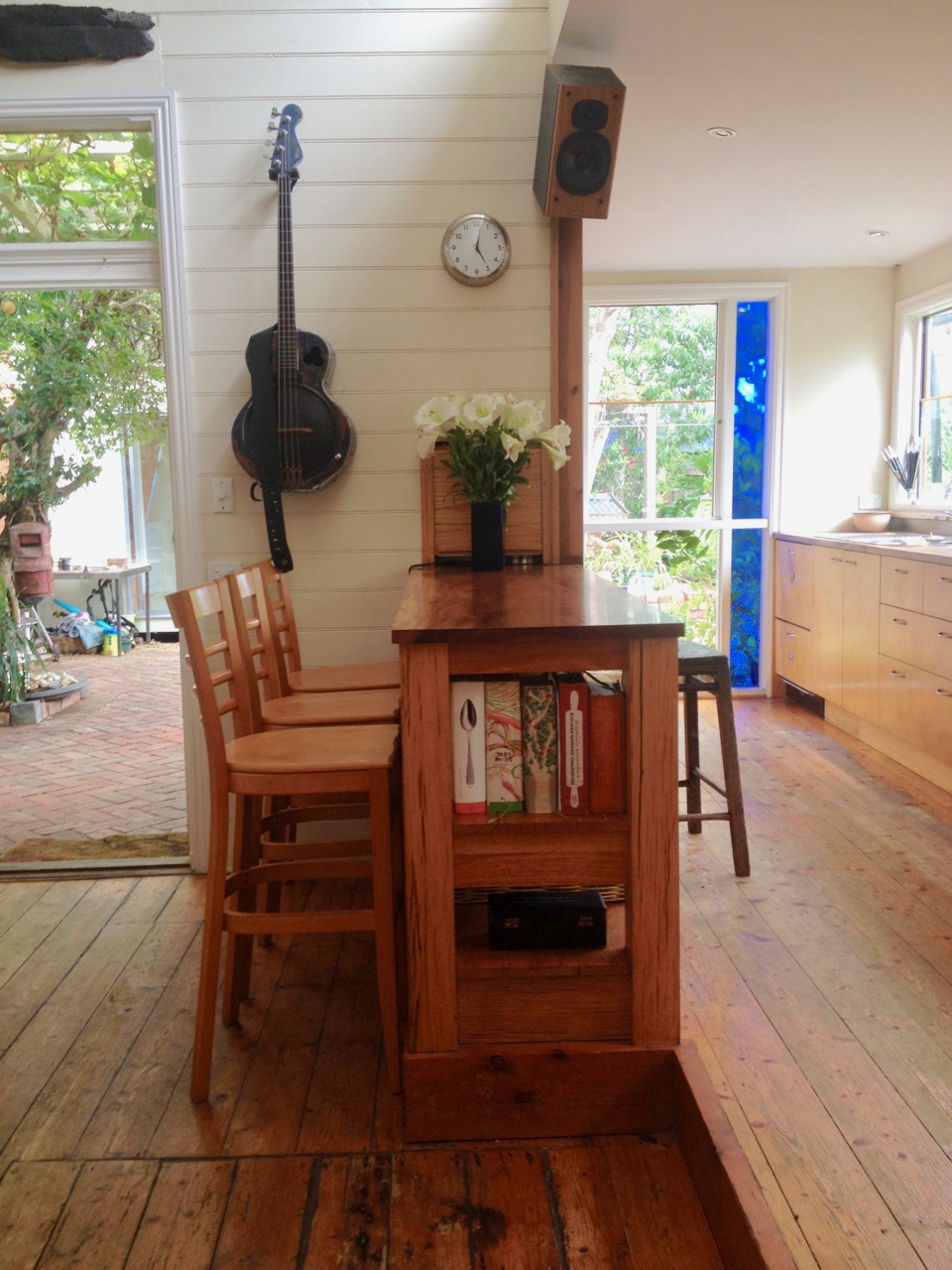
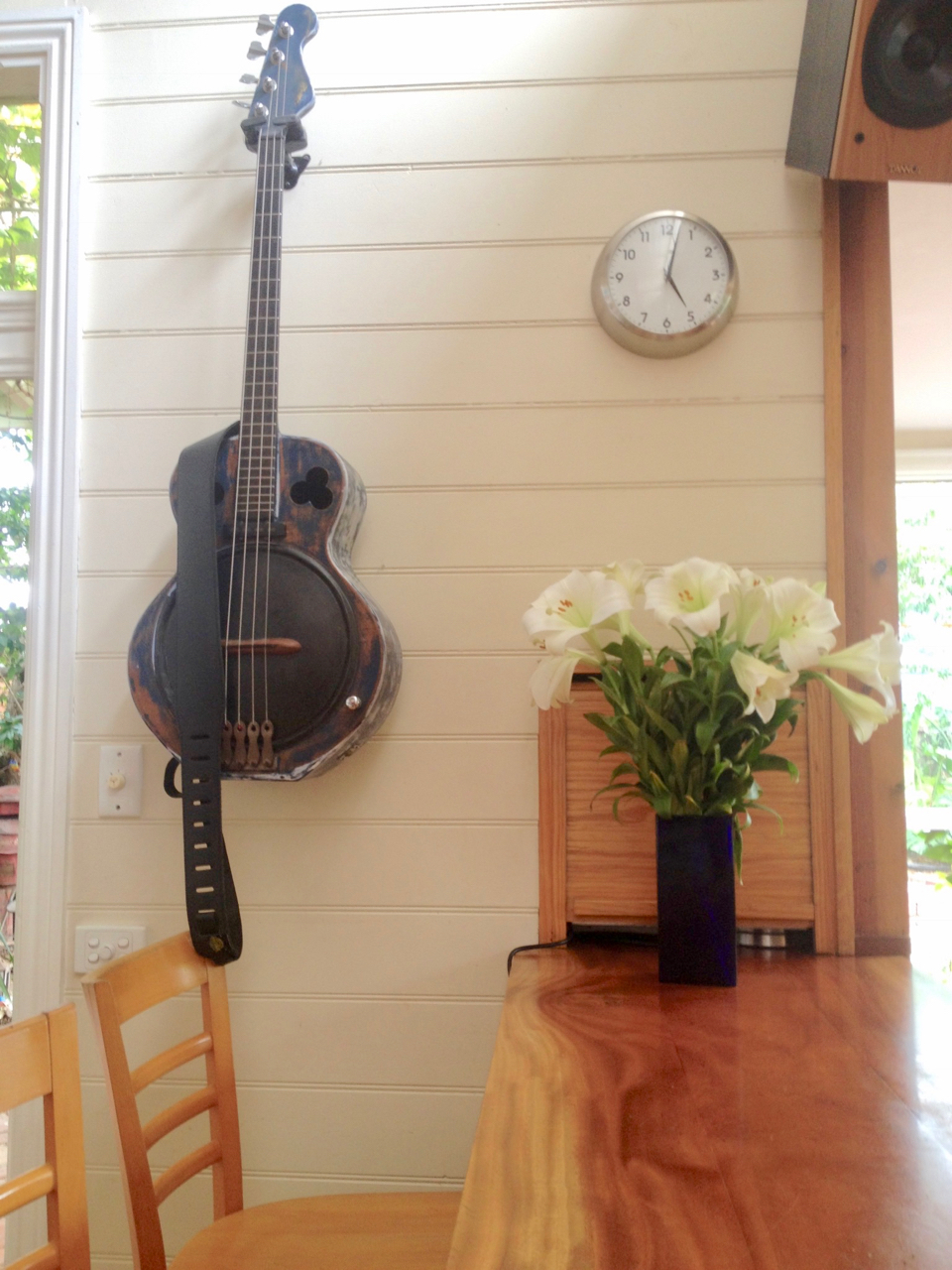 I play this bass all he time. I love it. I always throw it in he back of the car when we’re going away and there is a chance of playing music. It’s not as bassy as the bass of your dreams (see above), but with its punchy punchy mids, it’s always audible.
I play this bass all he time. I love it. I always throw it in he back of the car when we’re going away and there is a chance of playing music. It’s not as bassy as the bass of your dreams (see above), but with its punchy punchy mids, it’s always audible.
In 2016, we went to live in Berlin, and this happened:
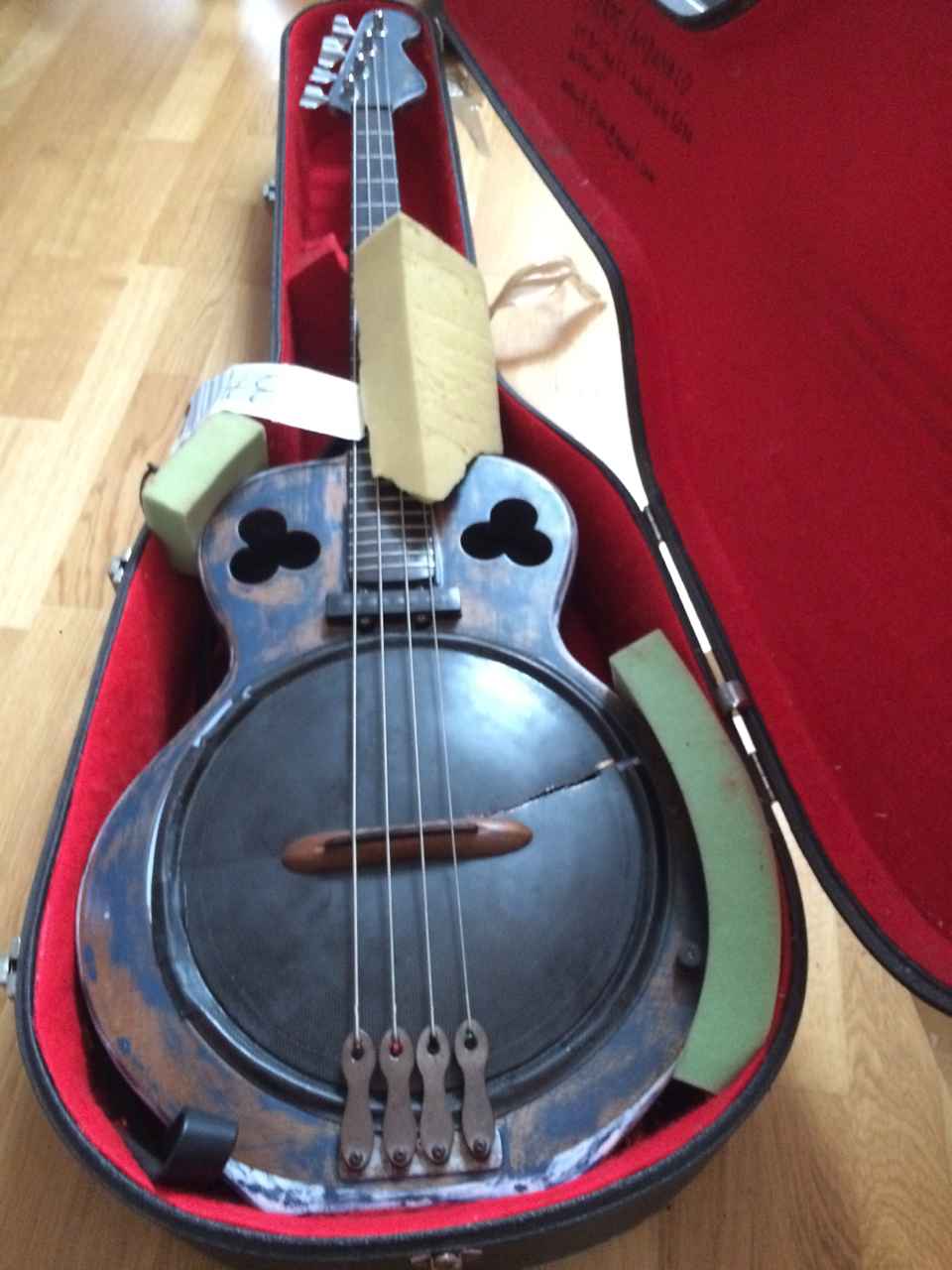 Of course, I felt sick just looking at it. Anyone who saw it did. I was also puzzled as to how it could have happened.
Of course, I felt sick just looking at it. Anyone who saw it did. I was also puzzled as to how it could have happened.
Shock. Sadness.
Denial, anger, bargaining, depression — and then finally acceptance, supposedly?
I tried to put her out of my mind. It all felt unfixable. We brought her home to Tasma, broken. The airlines would not accept responsibility, and I had tried to reach Richard Morgan before without success. I didn’t know Richard at all. I knew he had lived in Portland and in Tasmania somewhere, but I could not find him by scouring the internet.
Then I remembered a conversation with Kimberley Wheeler (Uncle Bill, Little Rabbit) long ago, where she had told me she could rustle up a number for Richard Morgan if she needed to. So I contacted her, and she found it. I still didnt call for months. I was afraid Richard would not want to work on the bass, and I couldn’t stand the thought of hearing that news.
One morning, walking to the tram, I told myself I was being stupid, and dialed the number Kimberley had given to me.
At this point I want to introduce the elusive Richard Morgan to you, because this is the moment our friendship began.
Richard picked up the phone and said, immediately on hearing me mention the bass: “Of course I remember her. I’d love to see her again!” If you read the profile above or any of the articles below it, you will see how truly and doggedly Richard pursues his art. We felt an immediate connection.
Turned out, Richard was living in Mount Isa now, 3000 km from Melbourne.
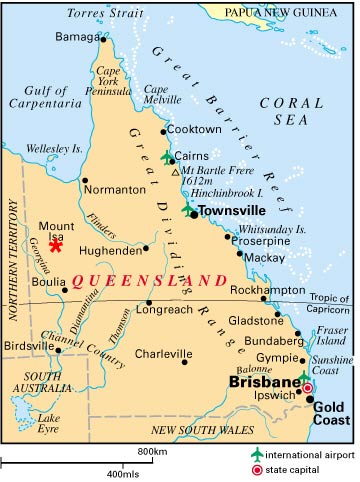 After a few months and a nervous truck ride, she was up with Richard in Mount Isa to be reborn.
After a few months and a nervous truck ride, she was up with Richard in Mount Isa to be reborn.
What followed was the best experience I have ever had with a maker. One of the first images that came through was this one of two dates, written on the inside back of the guitar:
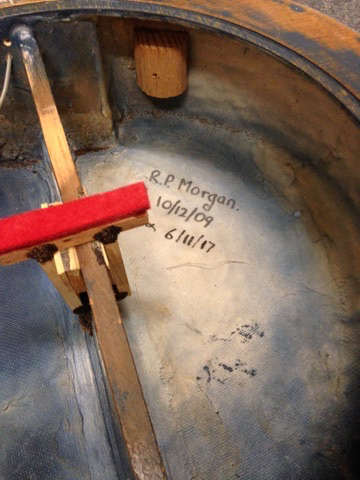
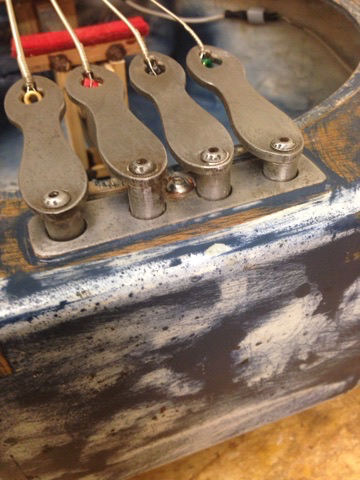
Richard called me whenever a decision needed to be made, and we would discuss it at length. The first decision was what kind of wood we should use on the resonator cone. We chose Celery Top pine. Richard felt it would be very loud.
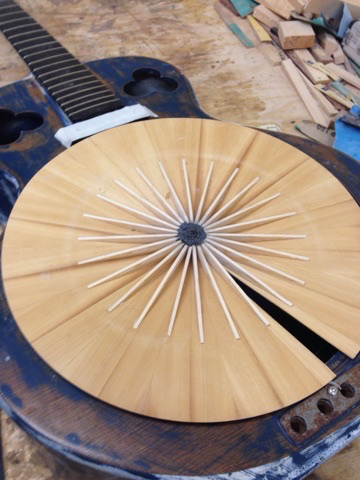
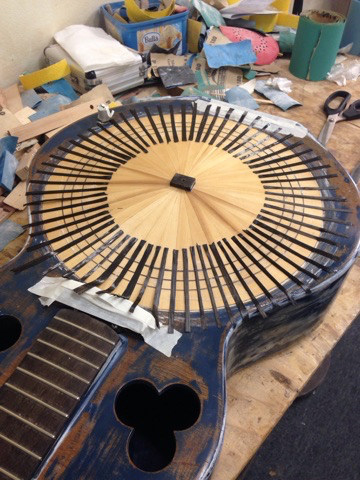
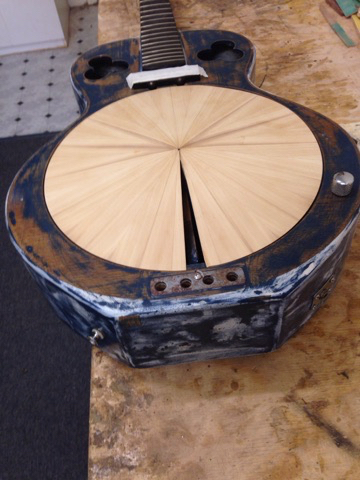 .. and it was all looking good:
.. and it was all looking good:
The call began with “Nick, I couldnt sleep last night…”
it fell over, and the whole headstock broke off! So Richard rebuilt that:
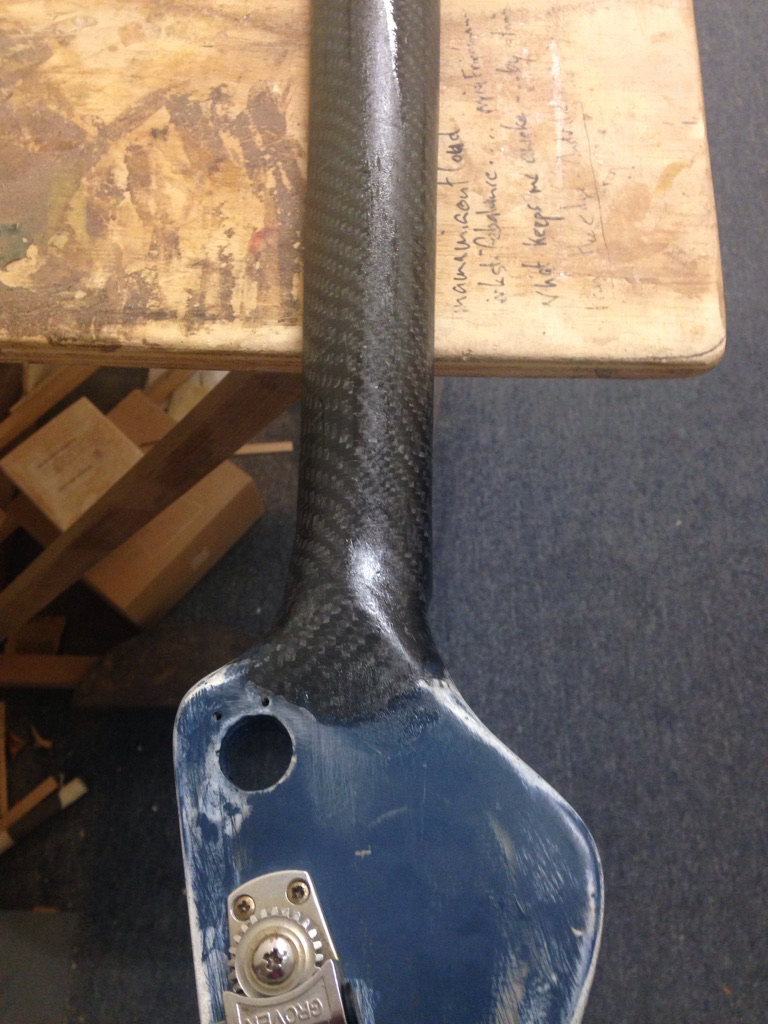
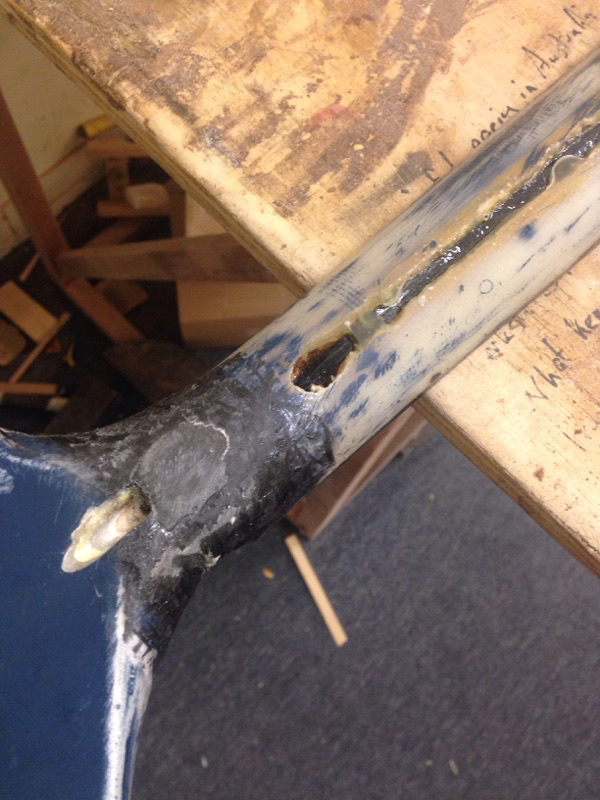
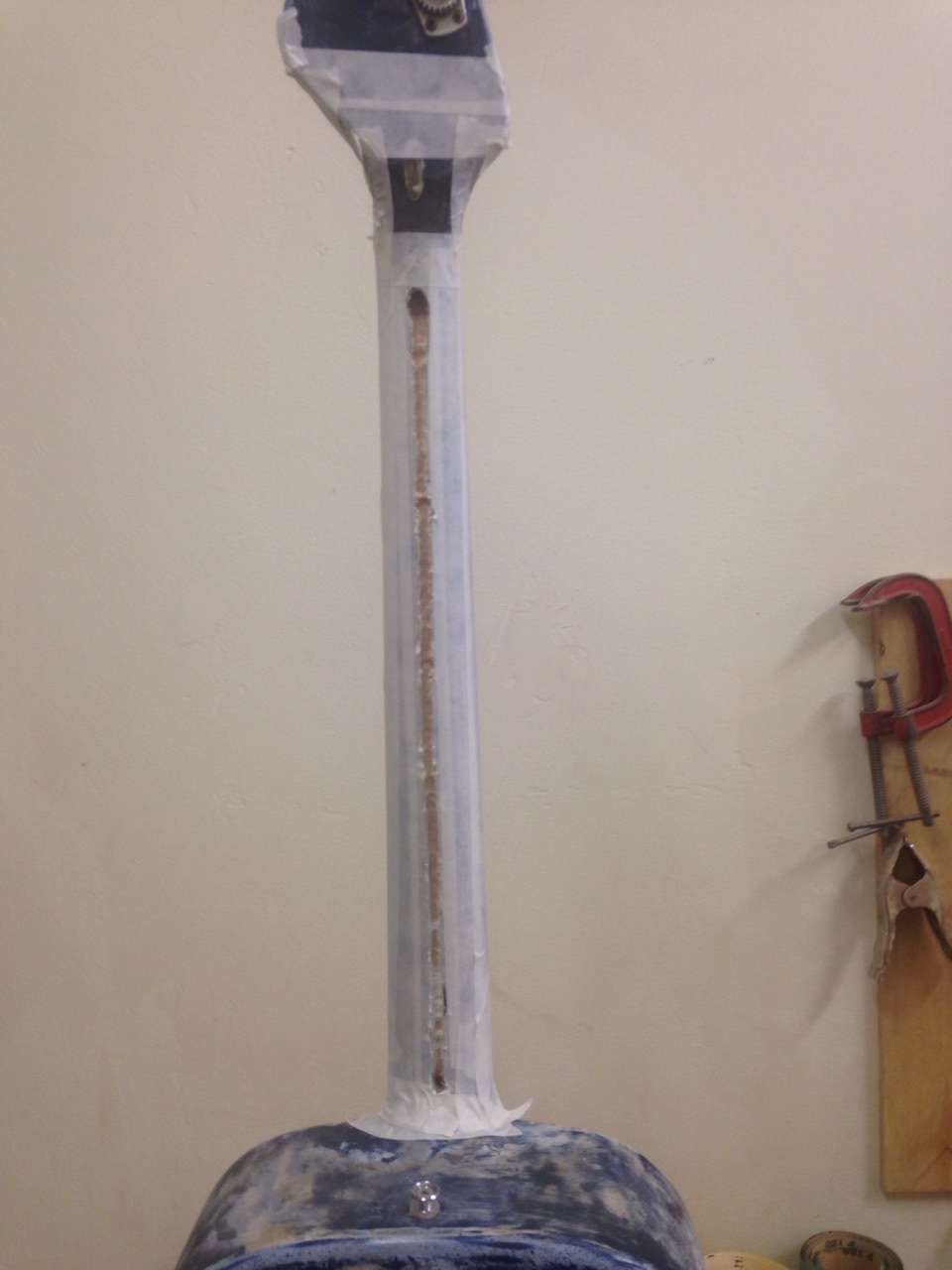
Until … The call began with “Nick, I couldnt sleep last night…”
Richard told me that she didnt have the bass response that he remembered from 2007. The Celery Top pine was very resonant, very loud, but it didnt have the thump of the old bass. He wasnt happy with the result yet, and he was already building yet another resonator cone out of western red cedar.
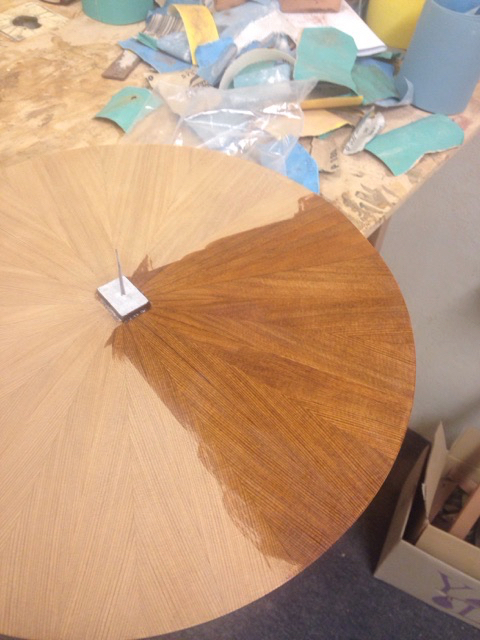
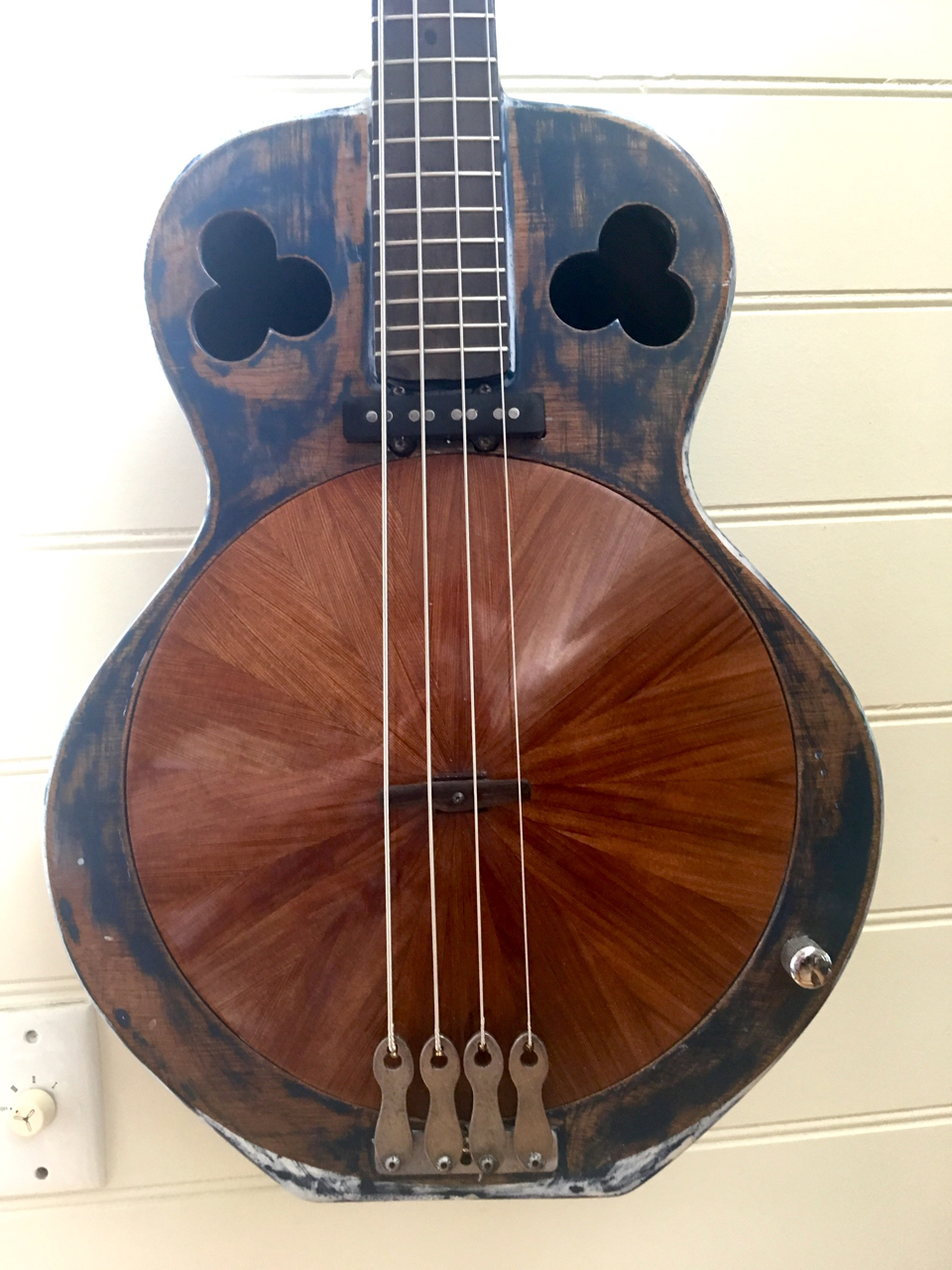 … and back up on the wall at Tasma. The day she arrived, we had two tradesmen come to the house. One of them charged me $400 for a plastic part for a toilet cistern. The other sullen fella charged me $400 for 20 minutes on the roof.
… and back up on the wall at Tasma. The day she arrived, we had two tradesmen come to the house. One of them charged me $400 for a plastic part for a toilet cistern. The other sullen fella charged me $400 for 20 minutes on the roof.
Richard put in three weeks of love. I’m not telling what changed hands financally, but every day of those three weeks was an object lesson in craftsmanship. In caring absolutely about the outcome of what you do. Literal write-your-name-on it integrity.
Thanks, Richard. The bass sounds great.
Who could love her more than I do?
Her maker.
Contact Richard here: dobmorg@gmail.com
